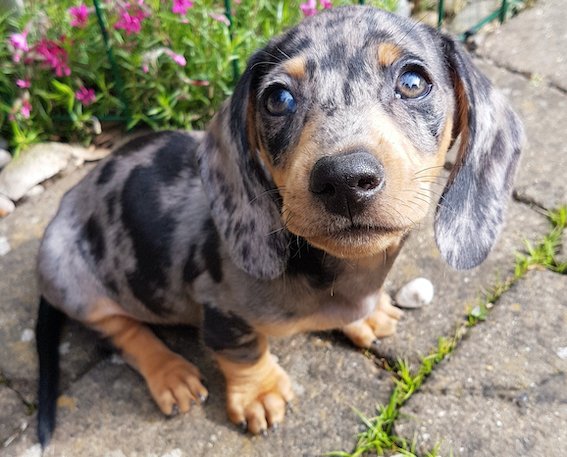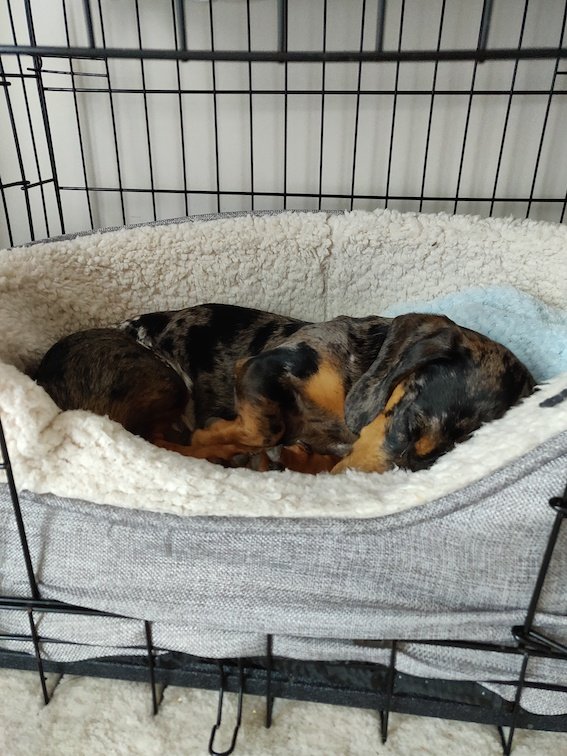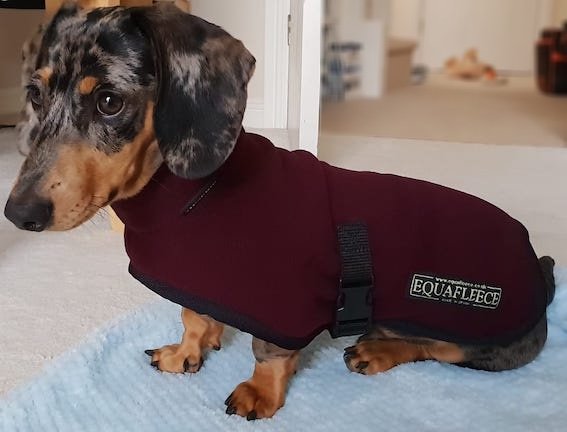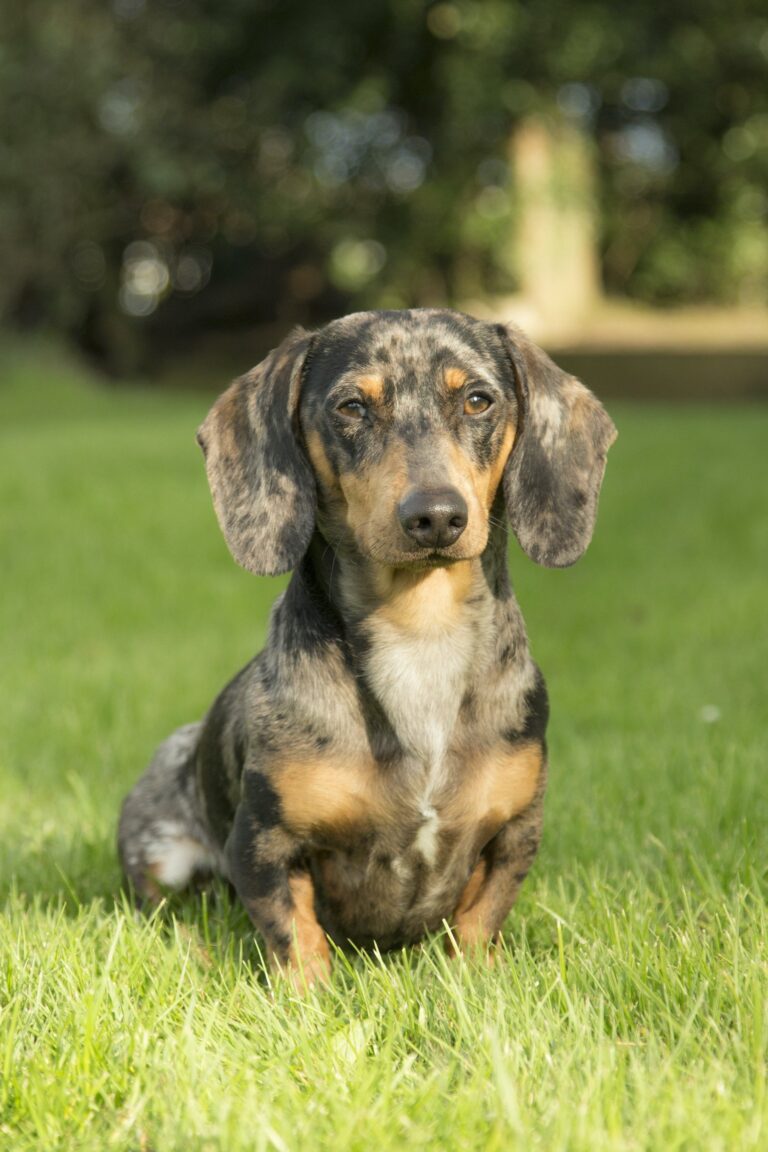How To Potty Train Your Dachshund Puppy
One of the things we kept hearing before getting our dachshund puppy was how difficult the breed can be to potty train. And honestly, we were a bit nervous about it. It came up in almost every article we read, and it definitely made us think twice. But I’m happy to say that with patience and consistency, we managed to fully house train our dachshund by the time he was about five to six months old.
Potty training a dachshund does take a bit of extra effort, but it’s absolutely doable with the right approach and some realistic expectations.

Should You Use Puppy Pads for Toilet Training?
This is probably the most debated part of potty training, especially with dachshunds. Some owners swear by puppy pads, while others argue that they confuse the dog and encourage them to go indoors instead of learning to wait for outdoor breaks.
We decided to use puppy pads only inside our dachshund’s playpen area during the early weeks. This was mainly for overnight use or short periods when we had to leave him alone. He had access to his crate, bed, toys, and a puppy pad within the pen. Outside of the pen, however, we avoided using pads altogether. We found that he either ignored them or chose to go elsewhere in the house. That’s when we focused on getting him into a solid outdoor toilet routine instead.
If you decide to use pads, try to keep them in one consistent location. But if your long-term goal is to have your dachshund go outside, the sooner you start building that habit, the better.
Start with Frequent Toilet Breaks
When your puppy first comes home, they’ll need to go a lot. Around eight to nine weeks of age, we took our puppy out every 20 to 30 minutes during the day. That might sound like a lot, but it really helped prevent accidents and got him used to toileting outdoors.
Give your puppy a few minutes to sniff around when you take them out. Most dachshunds will go within five minutes, although ours was sometimes stubborn in the rain. I can clearly remember standing under an umbrella for 15 minutes while trying to shield him from the weather. If your dachshund is sensitive to the cold or rain, a lightweight dog coat can really help make them more comfortable.
As your puppy gets older and more reliable, you can gradually stretch out the time between breaks. It won’t be long before you start recognising when they’re likely to go.
Watch for Signs That They Need to Go
Your dachshund puppy will usually give you some clues before they need the toilet, but these can be subtle. Keep an eye out for common signs such as:
-
Sniffing around the floor or furniture
-
Circling or pacing in one spot
-
Whining or whimpering
-
Suddenly pausing play or stopping what they’re doing
Once you see any of these signals, act quickly. Puppies don’t have much time between feeling the urge and actually needing to go, so a fast response is key to avoiding accidents.
Use Cue Words and Lots of Praise
We found that using a simple toilet cue, like “go wee,” helped our dachshund connect the command with the behaviour. Every time we took him out, we used the cue in a cheerful tone while he sniffed around. The moment he went, we gave lots of verbal praise like “good boy!” and sometimes followed up with a small training treat once he came back inside.
This kind of positive reinforcement helps your puppy understand exactly what you want them to do and makes the whole process more rewarding for both of you.
Build a Routine Around Key Times
In addition to watching for signs, it helps to establish a reliable routine around typical toilet times. Puppies often need to go after these key moments:
-
First thing in the morning
-
After meals
-
After a nap
-
After playtime or training
-
Right before bedtime
By sticking to these regular checkpoints, your dachshund will start to expect and prepare for outdoor breaks at those times. This structure builds confidence and reduces the likelihood of accidents.
Accidents Will Happen – Be Prepared
Even with the best plans, your puppy will still have the occasional accident. This is completely normal. What matters most is how you respond.
Avoid scolding your puppy. Instead, calmly clean up the mess and move on. Use an enzyme-based cleaning spray that breaks down the smell completely, since dogs tend to return to the same spot if they can still detect the scent. We used the Simple Solution Pet Stain and Odour Remover which worked really well. It’s available in most pet shops and online too.
Teach Your Dachshund to Alert You
As our dachshund got more reliable with going outside, we worked on helping him communicate when he needed to go. This was especially helpful when we were in a different room or working and not able to watch him closely.
Some owners use training bells by the door, encouraging their dogs to ring the bell when they want to go out. In our case, we were already teaching our dog the “speak” command, so we decided to use that instead. Whenever he waited by the door, we gave the “speak” cue until he barked. Then we opened the door and praised him for telling us. Within a short time, he started barking at the door on his own when he needed to go, which made life a lot easier.
Supporting Your Dachshund Through the Potty Training Process
Toilet training a dachshund can feel overwhelming at first, especially if you’ve heard how stubborn the breed can be. But it’s important to remember that your puppy is not trying to be difficult. They’re simply learning how the world works and relying on you to guide them through it.
By staying calm, keeping a consistent routine, and using plenty of positive reinforcement, you give your dachshund the best possible chance of success. Progress may feel slow on some days, but small wins add up quickly. One day you’ll realise your puppy has gone several days without an accident, and before long, toilet training will be second nature.







